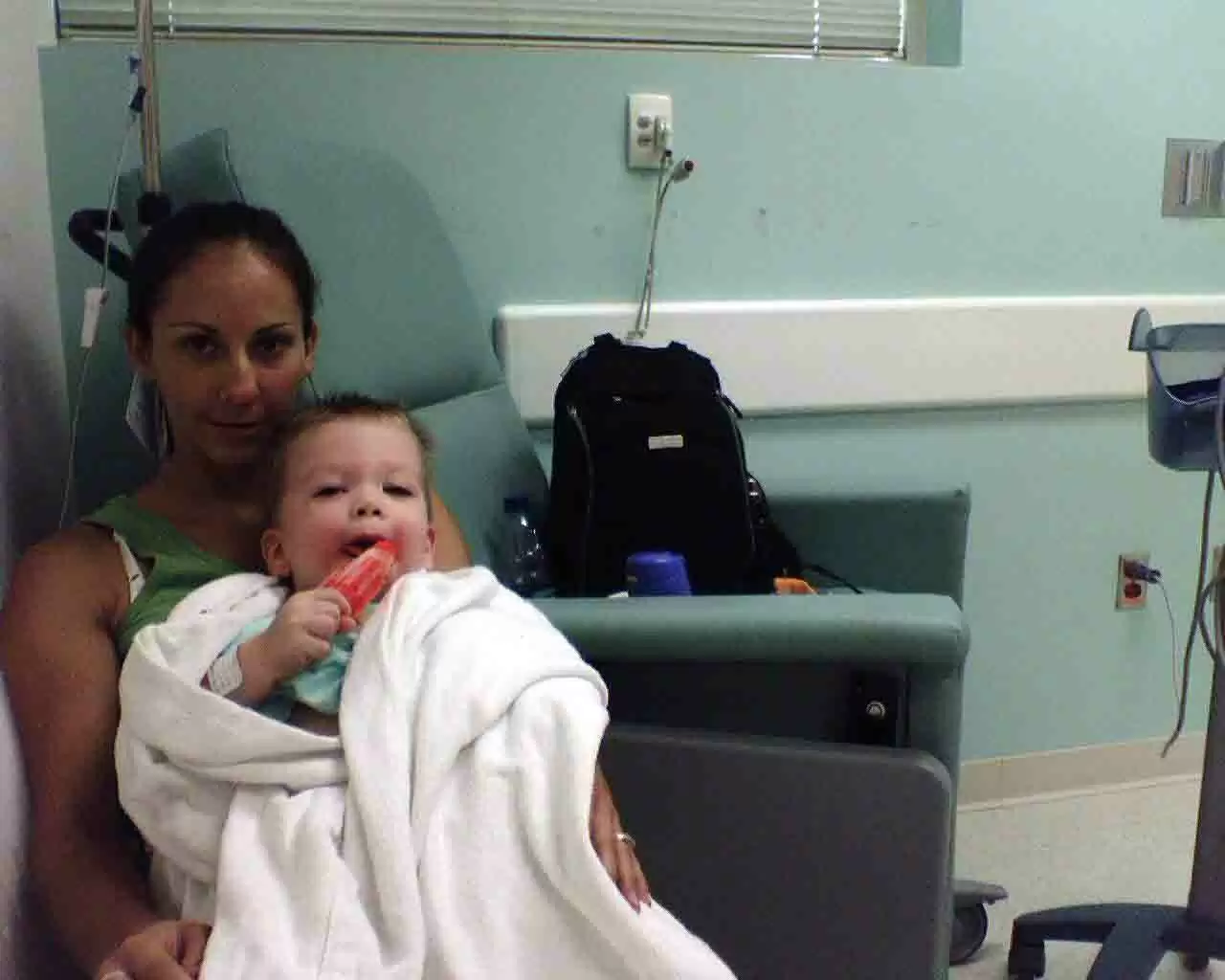
This article originally appeared in the Spring 2011 edition of Celiac.com's Open Original Shared Link.
Celiac.com 09/07/2011 - Through the hard work and concerted efforts of many support groups and individuals throughout the US, along with the generosity of Instituto Di Ricerca in Italy, research funding was accumulated. Early in the Twenty-First Century, under the auspices of the Center for Celiac Disease Research, a new epoch in celiac disease awareness was born. Spearheaded by Dr. Alessio Fasano and several other prominent gastroenterologists, a large multi-center study was undertaken and the rate of celiac disease in the general U.S. population was determined to be at least 1 in 133 (1). This pains-taking, thorough, time-consuming and expensive research started a landslide of opinions that shifted the medical paradigm on the prevalence of celiac disease in the US, and caused ripples in medical thinking throughout the world. Celiac disease quickly became known as a very common ailment that is partly driven by a genetic predisposition, and is now thought to afflict about one percent of Americans. This increase in recognized prevalence is largely the result of studies that are conducted by testing blood from healthy blood donors to determine these numbers (more on this shortly). Yet a recent article from the medical literature asserts that current reports of the prevalence of celiac disease are over-estimating the actual portion of the population that is afflicted by this ailment. This article, published in the Annals of Medicine and Expert Opinion in December of 2010, offers its own estimate the prevalence of celiac disease at about 1 in 160 (2). What are we to believe? Is the rate of celiac disease really overestimated by many of the experts conducting research in this area? Or is there some other explanation?
Celiac.com Sponsor (A12):
 There are actually several reasons that Biagi and colleagues have arrived at their reduced estimate of prevalence, and there is good cause to reject their claim in favor of the data indicating a prevalence of celiac disease that is close to 1% of American and other populations where gluten grains form a major part of the diet. The biases expressed by Biagi et al combine in this report to form what is probably the most glaring cause of their aberrant finding. These biases show up, both in their computations and in several emotion laden statements that appear in their report. There are also some indications to suggest that the statistical methods they employed are not appropriate for the data presented, especially when publishing an account that relies so heavily on statistical tools. For instance, they have failed to include some of the published data that fit within their inclusion criteria and would have significantly altered their results. There are also several confounding variables that were either overlooked or that warranted more attention than they were given by Biagi et al. Finally, despite their acknowledgement of some of the weaknesses in the process by which they arrived at their estimate, they have chosen to impugn the work of other researchers who have reported a higher frequency of celiac disease rather than entertain the possibility that it is their own analyses and paradigm that are problematic. Even their choice of research method, the systematic review, is suspect, as it offers more opportunities for inclusion of the very errors they have made.
There are actually several reasons that Biagi and colleagues have arrived at their reduced estimate of prevalence, and there is good cause to reject their claim in favor of the data indicating a prevalence of celiac disease that is close to 1% of American and other populations where gluten grains form a major part of the diet. The biases expressed by Biagi et al combine in this report to form what is probably the most glaring cause of their aberrant finding. These biases show up, both in their computations and in several emotion laden statements that appear in their report. There are also some indications to suggest that the statistical methods they employed are not appropriate for the data presented, especially when publishing an account that relies so heavily on statistical tools. For instance, they have failed to include some of the published data that fit within their inclusion criteria and would have significantly altered their results. There are also several confounding variables that were either overlooked or that warranted more attention than they were given by Biagi et al. Finally, despite their acknowledgement of some of the weaknesses in the process by which they arrived at their estimate, they have chosen to impugn the work of other researchers who have reported a higher frequency of celiac disease rather than entertain the possibility that it is their own analyses and paradigm that are problematic. Even their choice of research method, the systematic review, is suspect, as it offers more opportunities for inclusion of the very errors they have made.
Systematic reviews provide estimates based on averages of published research findings drawn from groups of studies of similar structure and design. The intent of this approach is to dampen the effects of extreme results, providing a more widely applicable and a more generally accurate perspective, eliminating variations driven by geographic location, accessibility of health care, research biases, etc. This is a useful tool that can be very helpful to busy clinicians by providing summaries that explain and clarify variations in findings as well as identifying mitigating factors in extreme findings. When done properly, these reviews reduce bias and other confounding factors, ultimately enhancing evidence-based optimal health care (3). However, Biagi and colleagues have fallen short of these ideals (2). They twice refer to their feelings in this report. Such expressions of the authors’ personal feelings reflect biases and preconceived notions that should not form any part of a scientific report. Yet they repeatedly do so. They go on to offer a rather snide parenthetic comment suggesting abuses of tissue transglutaminase testing. Such remarks demonstrate strong personal biases that interfere with the provision of objective information. Since bias reduction is an important, stated objective of the systematic review, this report by Biagi and colleagues should have been rejected by those who reviewed it.
Biagi and colleagues do acknowledge that published research results vary so widely that they can not use the superior statistical method called a meta-analysis. (This is a method that can be especially useful with respect to celiac disease because when groups of research subjects are small, meta-analyses can be used to combine the findings from many small groups and provide more meaningful information.) The authors of the paper in question explain their choice of systematic review, yet this approach requires an exhaustive exploration of the relevant literature (3) which should have reached further than the small set of search terms they used. In the interests of accuracy, it is important to find most or all of the relevant literature. Their limited search methods may explain why they missed several important studies, including the investigation of 989 Saharawi children by Catassi et al (4). Such studies would have altered their findings substantially which they side-step in a letter defending their original paper, published in the subsequent issue of the same journal (5). For instance, Catassi et al found a 5.6% prevalence of celiac disease among the sub-Saharan African children investigated (4). That is five and one half times as frequent as the prevalence figure that they have impugned. Surely they needed to at least acknowledge the existence of this report. They neither included it nor acknowledged it. In their letter of defence they assert that diagnoses were made on the basis of blood tests, not intestinal biopsies. However, many of the studies they did include in their data also offered diagnoses on the basis of blood tests in the absence of intestinal biopsies (5).
Biagi et al also assert over-estimation due to inclusion of “patients already known to be affected by celiac disease” (celiac disease). But how could their approach lead to an accurate tally of the percentage of all persons in a given population who have celiac disease? There appears to be some confusion about the meaning of the term “prevalence”. For instance, if a test group of 10,000 is identified and all participants are tested for celiac disease, yet several of them were previously diagnosed with celiac disease, Biagi and colleagues expect these previously diagnosed celiac patients to be excluded. Most of those who were previously diagnosed would test negative because they are now eating a gluten free diet. According to the Biagi paper, we should either exclude these people from our test group, or identify them as not having celiac disease. Either alternative is likely to produce much less accurate results than including them in the group that has celiac disease. (This approach alone would produce the faulty results they report in any population where there is reasonable access to modern health care.) Prevalence, after all, is a statement of the number of cases of a particular disease in a particular population. Excluding cases that were previously identified just doesn’t make any sense.
Further, since IgA deficiency forms almost 2% of some populations (6) and the prevalence of celiac disease in IgA deficiency, in the same population is reported at 14% (4), such a significant confounding variable warrants attention. Yet Biagi et al do not even mention it. Let me explain. If total IgA was not measured in some, most, or all of the studies reviewed by Biagi et al, then IgA deficiency should reduce the reported prevalence by about 14%. That difference alone would bridge most of the gap between the 1:133 and 1:160 prevalence findings.
But serology (blood testing) misses more than just IgA deficiency (7). This significant portion of the reports reviewed should therefore be expected to significantly under-estimate the prevalence of celiac disease. This is because, in these studies, case finding is often done with serological testing. Thus, these researchers will often fail to detect, and they will therefore have failed to biopsy, significant numbers of cases of seronegative celiac disease, both because of those excluded as blood donors due to their anaemia and/or malnourished condition and because of those who are seronegative, whether due to IgA deficiency or other reasons.
If any of the studies Biagi and colleagues reviewed used symptoms and signs for case finding, this is yet another source of underestimation, one that is probably the cause of current under-diagnosis of celiac disease that is estimated at above 95%.
These authors point out that “anaemia or insufficient body weight are universally recognized as criteria that preclude enrolment as blood donors.” Since more than one quarter (13/41) of the studies they reviewed report rates based on case finding through the screening of healthy blood donors, the results of these studies must underestimate prevalence regardless of the authors’ feelings on the topic. Yet it is their feelings they harken to on this issue: “We feel that we did not find this difference because of the wide heterogeneity of the published papers which hampered a specific analysis focusing on this point.” I don’t much care what they feel. I want to know what evidence they can report. If they are interested in communicating about their feelings, there are many appropriate venues for such exchanges, but the medical research literature seems, at best, a very questionable choice.
Much of the evidence they offered in support of their assertions that researchers are over-estimating celiac disease could more accurately be seen as inducing under-estimations of this common ailment.
Finally, are the researchers who authored 41 separate reports failing so miserably at the diagnostic process that they miss the mark on a majority of marginal cases of celiac disease? This is the thrust of the Biagi et al statement:
“Again, patients with minimal intestinal lesions and/or negative coeliac antibodies were always considered to be affected by celiac disease. Although these patients certainly exist, in our clinical experience they are very rare and most of the time they are not affected by celiac disease but are the result of diagnostic mistakes.“(2)
In short, Biagi and colleagues claim to be so superior to the world leaders in celiac research that Biagi et al’s clinical experience is somehow more valid and accurate than the peer-reviewed, reported findings of most others working in this field (5).
The proposition that the majority of celiac researchers are over-estimating the prevalence of celiac disease ignores variations due to IgA deficiency, seronegativity (negative blood tests), and ignores the variability of intestinal damage as shown by the Marsh system and other approaches for evaluating intestinal histology and/or diagnosing celiac disease without intestinal biopsies (8, 9, 10, 11, 12). Further, while many investigators have reported that potential or latent celiac disease often shows a similar constellation of signs and symptoms to those seen in celiac disease, Bertini et al have recently demonstrated that many cases of potential celiac disease show the same signatures of metabolic disturbances, both in the bloodstream and in urinary excretions, as those found in celiac disease (12). Such disturbances, whether in the context of celiac disease or potential celiac disease, normalize on a gluten free diet (13). In all, the Biagi et al article reflects the authors’ biases, serious limitations in the authors’ applications of the relevant statistical tools, and calls into question the quality of the process in this instance.
Sources:
- Fasano A, Berti I, Gerarduzzi T, Not T, Colletti RB, Drago S, Elitsur Y, Green PH, Guandalini S, Hill ID, Pietzak M, Ventura A, Thorpe M, Kryszak D, Fornaroli F, Wasserman SS, Murray JA, Horvath K. Prevalence of celiac disease in at-risk and not-at-risk groups in the United States: a large multicenter study. Arch Intern Med. 2003 Feb 10;163(3):286-92
- Biagi F, Klersy C, Balduzzi D, Corazza GR. Are we not over-estimating the prevalence of coeliac disease in the general population? Ann Med. 2010 Dec;42(8):557-61. Epub 2010 Oct 1.
- Cook DJ, Mulrow celiac disease, Haynes RB.Systematic reviews: synthesis of best evidence for clinical decisions. Ann Intern Med. 1997 Mar 1;126(5):376-80.
- Catassi C, Rätsch IM, Gandolfi L, Pratesi R, Fabiani E, El Asmar R, Frijia M, Bearzi I, Vizzoni L. Why is coeliac disease endemic in the people of the Sahara? Lancet. 1999 Aug 21;354(9179):647-8.
- Hoggan, R. Comment on: Are we not over-estimating the prevalence of celiac disease in the general population? Annals of Medicine and Expert Opinion, 2011, 43: 164-65
- Bahari A, Karimi M, Sanei-Moghaddam I, Firouzi F, Hashemi M. Prevalence of celiac disease among blood donors in Sistan and Balouchestan Province, Southeastern Iran. Arch Iran Med. 2010 Jul;13(4):301-5.
- Sugai E, Hwang HJ, Vázquez H, Smecuol E, Niveloni S, Mazure R, Mauriño E, Aeschlimann P, Binder W, Aeschlimann D, Bai JC. New serology assays can detect gluten sensitivity among enteropathy patients seronegative for anti-tissue transglutaminase. Clin Chem. 2010 Apr;56(4):661-5. Epub 2009 Dec 18.
- Kurppa K, Ashorn M, Iltanen S, Koskinen LL, Saavalainen P, Koskinen O, Mäki M, Kaukinen K. Celiac disease without villous atrophy in children: a prospective study. J Pediatr. 2010 Sep;157(3):373-80, 380
- Salmi TT, Collin P, Reunala T, Mäki M, Kaukinen K. Diagnostic methods beyond conventional histology in coeliac disease diagnosis. Dig Liver Dis. 2010 Jan;42(1):28-32.
- Kaukinen K, Collin P, Mäki M.Latent coeliac disease or coeliac disease beyond villous atrophy? Gut. 2007 Oct;56(10):1339-40.
- Troncone R, Auricchio R, Granata V. Issues related to gluten-free diet in coeliac disease. Curr Opin Clin Nutr Metab Care. 2008 May;11(3):329-33.
- Bertini I, Calabrò A, De Carli V, Luchinat C, Nepi S, Porfirio B, Renzi D, Saccenti E, Tenori L. The metabonomic signature of celiac disease. J Proteome Res. 2009 Jan;8(1):170-7.
- Bernini P, Bertini I, Calabro A, la Marca G, Lami G, Luchinat C, Renzi D, Tenori L. Are Patients with Potential Celiac Disease Really Potential? The Answer of Metabonomics. J Proteome Res. 2010 Dec.









Recommended Comments